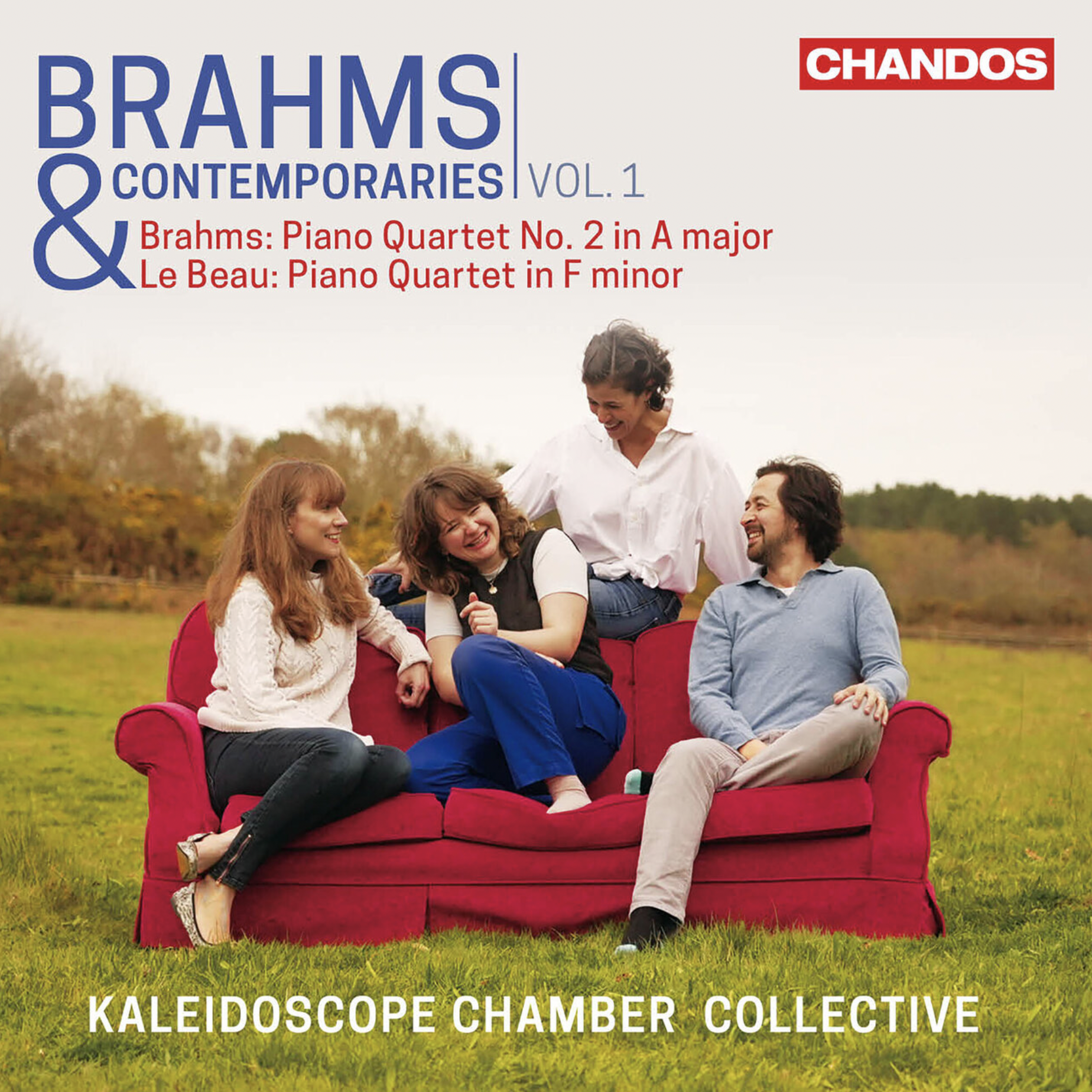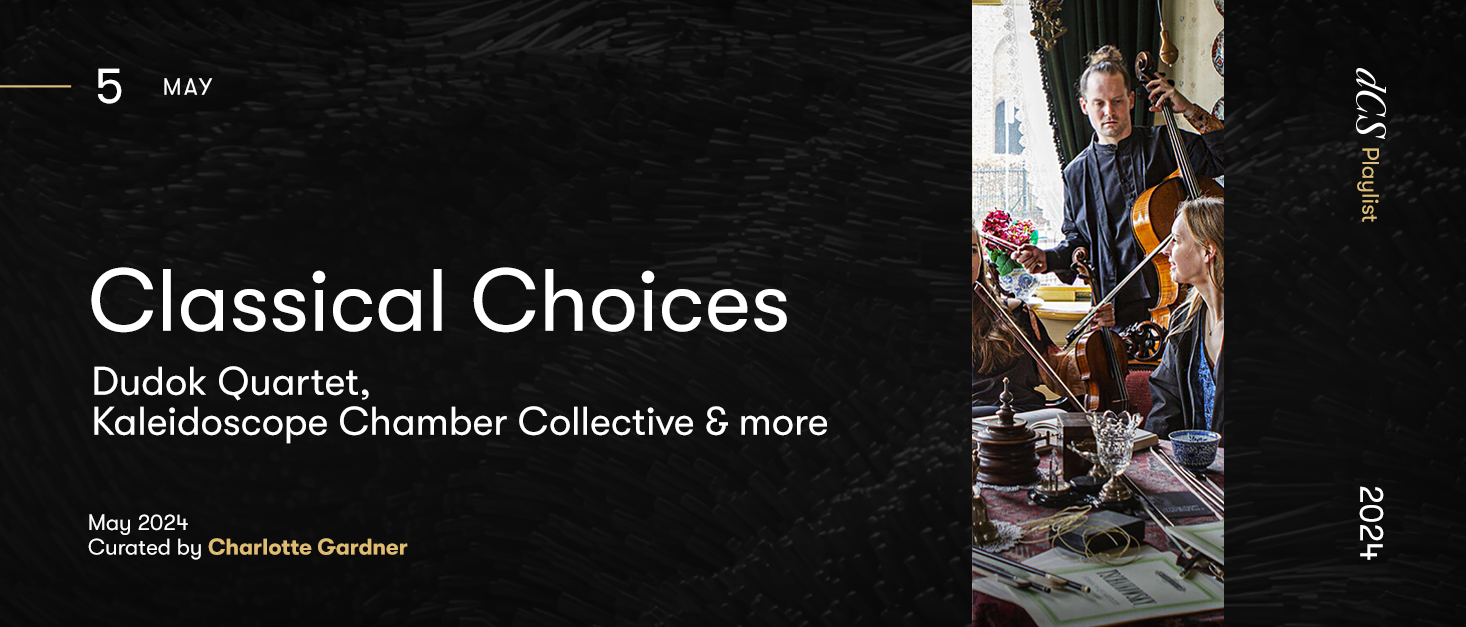This month’s Classical Choices opens with an archive track from Hyperion Records’ fabulous catalogue. This revered specialist label was acquired by Universal Music Group in March 2023, bringing news that its acclaimed collection – which includes over 2,000 recordings spanning 43 years – would be made available on streaming services.
The upload process was completed in May 2024, and global Hyperion streams have since exceeded 100 million. It’s a phenomenal achievement, and it’s exciting to see Hyperion’s artistic and production values drawing such interest even in a crowded streaming landscape.
To celebrate this feat, I’ve begun this month’s playlist with an extract from a Hyperion classic: the first movement of Walton’s Symphony No in B flat minor, recorded in 2010 by the BBC Scottish Symphony Orchestra and Martyn Brabbins, in Glasgow City Halls.
From there, it’s on to our new releases, which include the first instalment of a head-turning new Tchaikovsky string quartets cycle from the Dudok Quartet, followed by an original series from Kaleidoscope Chamber Collective and a multi-piano concerto project from Kent Nagano and the pianists of his family with the Orchestre de la Suisse Romande.

Tchaikovsky String Quartets Vol. 1
Dudok Quartet
Rubicon
Tchaikovsky’s three string quartets were once viewed by some as being slightly lesser compositions. Whilst this perception has slowly begun to shift, they remain underrepresented on stage and in the studio. A new release from the Dudok Quartet, however – the first instalment in a new Tchaikovsky quartets cycle – promises a fresh perspective on these often overlooked works.
The cycle is the result of a loving exploration process which extends back to 2011, when the quartet began postgraduate studies with Marc Danel of the Danel Quartet (the first European string quartet to have studied both in Europe with the Amadeus Quartet, and in Moscow with the Borodin Quartet). The Dudok built on this chain of heritage with studies of 18th and 19th century performance practice, working with unwound gut strings and period-appropriate bows.
These are striking readings, offering an entirely different, more tactile and slightly wilder sound world to both the Borodin Quartet’s cycle, and the more recent, slightly brighter-toned Heath Quartet readings of the First and Third (which are also superb).
The warmly tactile dark depth and luminous glow of the Dudok’s gut-strings sound is fabulous. So too are their elegant portamentos – a period-performance touch, but sounding equally alive with Tchaikovsky’s love of the human voice – and their sense of freedom and emotion, whether it’s their semi-improvisatory passion and metrical push and pull with the Second Quartet’s opening Adagio, or the sweet-toned gravity and sense of quietly fervent prayer they’ve brought to the First’s Andante’s folk or hymn-like theme (which reportedly made Tolstoy cry).
Another pleasure is the way in which the music’s every dance echo is joyously, exhilaratingly leapt upon. Further highlights include the airily earthy smack and zing of the First’s Scherzo, and the wild, freewheeling race to the finish line of its Finale.
Head to the Second Quartet’s Andante for a slice of lyrical intensity wrapped up in ravishing tone, and appreciate the luminosity of their tones, as well as the way the cello’s repeated notes are brought to the fore from 9’00”. Their tremendous range of colour and attack and dramatic pacing can be appreciated in the transition from power and energy to sweeter wistfulness in the Second Quartet’s first movement, onwards from around 9’30”, and elsewhere in its Allegro von moto, with the broad magnificence of their approach to its concluding flourishes from 5’00” onwards.
Add cellist David Faber’s transcription of Lensky’s Aria from theopera, Eugene Onegin – as much a showcase for their colouristic range as for their capacity for human-like song – and this has all the signs of being a benchmark-setting cycle. If you do find yourself especially hooked, you might also wish to visit the quartet’s website, where you’ll find the accompanying essay that the quartet commissioned from Dutch writer and philosopher Maxim Februari, to be distributed at their concerts this season. It’s Quartet No 1 plus Lensky’s Aria that you’ll find on our playlist.

Brahms and Contemporaries Vol. 1
Kaleidoscope Chamber Collective
Chandos
Brahms may at first glance be a surprising choice for the always-sparkling Kaleidoscope Collective – a group known for championing the under-championed – but if you look closer at this first instalment of their new Brahms & His Contemporaries series, you’ll see that they’re juxtaposing his three piano quartets with ones by his lesser-known contemporaries. For this first volume, that means pairing his Piano Quartet No 2 in A major from 1861 (itself not the most regularly played of his three) with the sole example in the genre by Luise Adolpha Le Beau (1850-1927), who despite her name was German, and thus came into direct contact with Brahms.
An accomplished pianist and critic as well as composer, Le Beau was more fortunate than many female composers of her time, in that her parents were forward-thinking enough to nurture her musical talents. She was able to study with Clara Schumann and Franz Lachner, a friend of Schubert who was well known and admired in his day, and leave behind an output covering all genres. More conventionally for her time, however, she found her professional advancement repeatedly blocked, and once her parents died in 1896, she largely withdrew from public life.
Despite professional challenges, her Piano Quartet was an unequivocal public and critical success at its 1884 premiere at the Leipzig Gewandhaus. Julius Riedel, responsible for the venue’s concert programme, told her that its success eclipsed any he had ever known there. The same year, Brahms and his publisher Hanslick invited her to show them some of her compositions, and responded to them positively. It’s not hard to hear why when you listen to the piano quartet. It has a showstopper of an opening, which begins with strings alone, intoning a mournful chorale, before the piano’s arrival ushers in the passionate movement proper, full of close contrapuntal conversation and frequent Schubertian switches between major and minor (a quality evident across the work, along with a similarly Schubertian cyclical architecture).
The Kaleidoscope players – violinist Elena Urioste, violist Rosalind Ventris, cellist Laura van der Heijden and pianist Tom Poster – have made beautiful, respect-filled work of it all in this new release. Their Adagio is the scene of some especially radiantly expansive, ardent phrasing and conversation – just revel in the approach to its final climax, where Urioste’s violin absolutely soars. Other standout moments include following movement’s combination of pizzicato-coloured, mazurka-rhythm’d rise and fall, with Poster’s sprays of broken piano chords coming sunnily light of touch, and here and across the quartet, a perfect-feeling balance between his own soft sepia tones, and his slightly brighter strings colleagues.
Brahms’s epic-length quartet, meanwhile, serves an excellent set-up to all this, its own searching melodies and Schubert-indebted writing performed with freshness, rhythm and fluidity.
It’s early to already be eagerly awaiting Volume 2, but with playing such as this, and a wonderful repertoire discovery in to boot, it’s inevitable that we should. Equally inevitably, it’s the Le Beau I’ve given you for this month’s playlist.

Mozart and Poulenc Double and Triple Piano Concertos
Mari Kodama, Momo Kodama, Karin Kei Nagano, Orchestre de la Suisse Romande, Kent Nagano
Pentatone
This feast of multi-piano concertos sees Kent Nagano at the helm of the Orchestre de la Suisse Romande, in partnership with the pianists of his family – his wife Mari Kodama, his daughter Karin Kei Nagano and his sister-in-law Momo Kodama – mirroring Mozart’s own practice of performing with his father, his sister, his wife and his sister-in-law.
Mozart’s Piano Concerto No 7 for 3 Pianos in F major K 242 sets the tone of lightly rippling, song-filled ease and conviviality, plus superbly sensitive blending. Often, you’d need the score in front of you in order to tell one pianist from another, so aligned are they in every regard. The orchestra brings a smoothly eloquent elegance and subtle spring to complement the pianists’ airy gracefulness, with everything beautifully shaped and paced.
For the two double concertos – Mozart’s Piano Concerto No 10 for 2 Pianos in E flat major K 365 and Poulenc’s Concerto for 2 Pianos and Orchestra in D minor, FP 61 – Karin Kei Nagano steps back to leave Mari and Momo Kodama. Lovely moments include the Mozart’s central Andante, the two sisters absolutely symbiotic where their lines move as one, with the oboe comment shining out to beautiful effect.
Poulenc’s neo-classical 1932 work makes for a brilliantly complementary partner work with its own Mozart-breathed textures, figurations and woodwind comment, and everyone is clearly relishing both the parallels between the two composers’ scorings, and Poulenc’s idiosyncratic rhythms and percussion colour. Listen and admire the utter sea change of mood and colour they’ve achieved in the first movement from about 4’45” to 6’00”, when we move from perkiness-with-a-twist-in-its-tail, to darker mystery, and onwards into a piano-led dreamscape. It’s the Poulenc I’ve given you for the playlist.


















